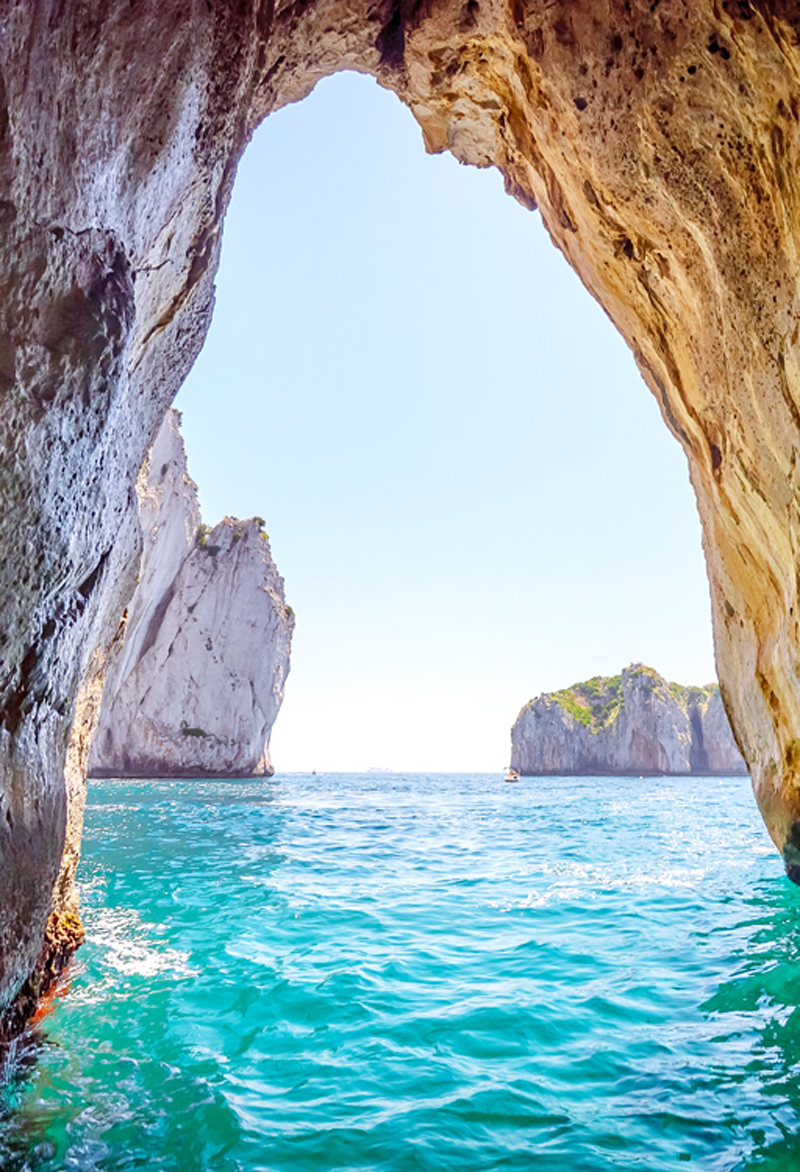There are so many iconic landmarks and fascinating landscapes to explore on Earth’s surface that it’s sometimes easy to forget what lies underneath. Exploring the planet’s vast network of caves is pretty much guaranteed to be an adventure, but these seven caves should be at the top of any aspiring spelunker’s bucket list.
Reed Flute Cave – China

With its stalactites and stalagmites awash in a rainbow of hallucinogenic lighting, you could almost mistake this otherworldly cave for an outsized psychedelic aquarium. So it’s no surprise that millions of visitors come to the southern Chinese city of Guilin to revel in the neon wonders of this 787-foot-long river-carved limestone cavern.
Perhaps more surprising, though, is that the cave’s discovery was relatively recent: It was a search for shelter from Japanese attacks during World War II that resurfaced the Reed Flute Cave to the modern world. The name is derived from the reeds that grow outside the entrance, which are used in the production of flutes. Evidence suggests that people have been seeking refuge of some kind or another here since well before the 1940s — there are inscriptions inside that date back to the Tang Dynasty (618 to 906 CE). Of course, in cave time, that’s basically a minute ago: The presumed age of the site is somewhere in the neighborhood of 180 million years.
Waitomo Caves – New Zealand
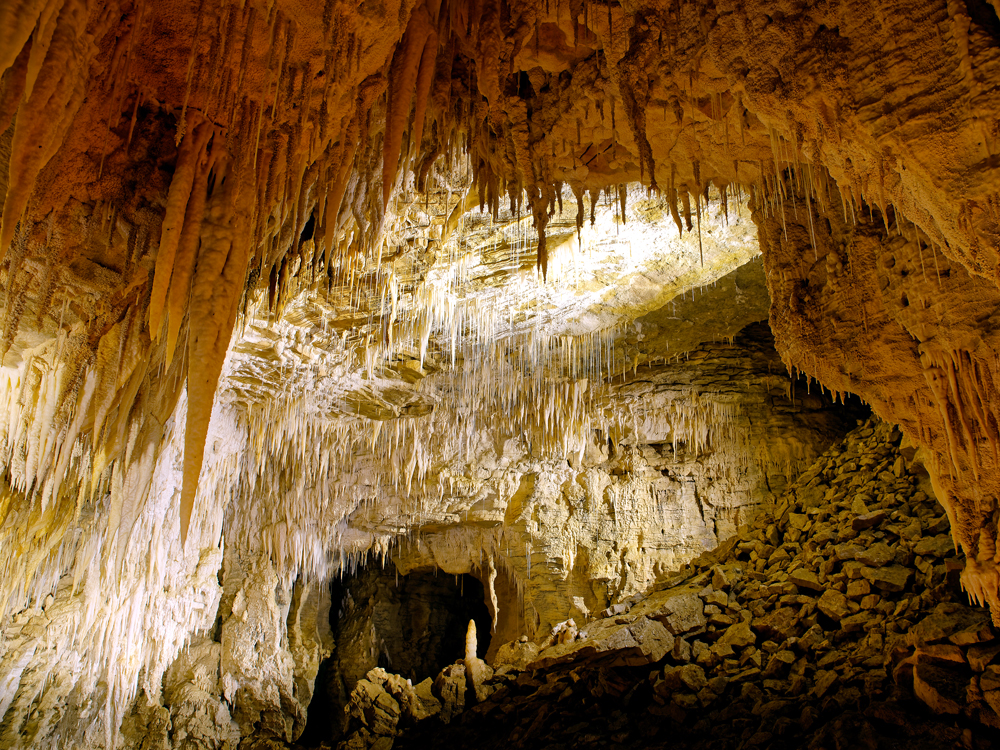
One of the most sublime natural wonders on New Zealand’s North Island has an unassuming star: the tiny, yet mighty glowworm. At the Waitomo Caves, thousands of these insects dangle by their silken threads from the cave ceilings, their namesake glow — a distinctive bluish-green hue — illuminating the subterranean roofs like a starry night sky. The glow of these insects serves to attract prey for food, but to visitors, the luminescence creates an atmosphere reminiscent of a fairy tale.
The worms, which are actually a species of fungus gnat called Arachnocampa luminosa, are endemic to the island country. The caves the glowworms dwell in are no less spectacular than the insects themselves, formed from limestone that dates back some 30 million years. Visitors can traverse an intricate system of footpaths through this underground world or quietly float beneath the glowworms in rope-led boats — either is an unforgettable experience, and one you can’t find anywhere else but in New Zealand.
Mammoth Cave – Kentucky
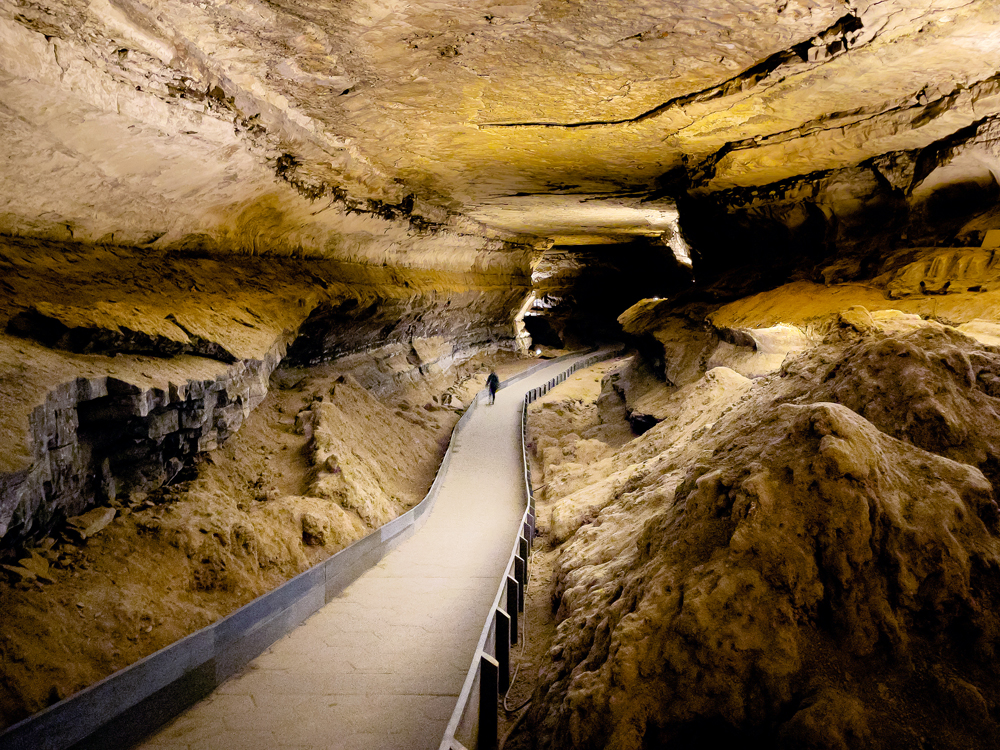
Mammoth Cave’s moniker just barely scratches the surface of how extensive this cave system really is. Located in west-central Kentucky, the underground complex consists of more than 412 miles of surveyed passageways — and that’s all scientists know about so far. Some estimate the cave system stretches for about 1,000 miles in total, and several more miles are discovered each year.
This underground labyrinth is the centerpiece of Mammoth Cave National Park and recognized as both a UNESCO World Heritage Site and an International Biosphere Reserve. Although the caves were only discovered by Europeans in the 18th century, humans have visited them for thousands of years. Mammoth Cave holds vast historical and ecological riches in its massive, stony walls. There are numerous impressive cave structures on display, including stalactites, stalagmites, and a type of gypsum formation called “gypsum flowers.” The dry, cool environment of Mammoth Cave also makes it an ideal habitat for several endangered forms of bat and cave shrimp. To make the most of your visit, join one of the cave tours offered by the National Park Service.
Son Doong Cave – Vietnam
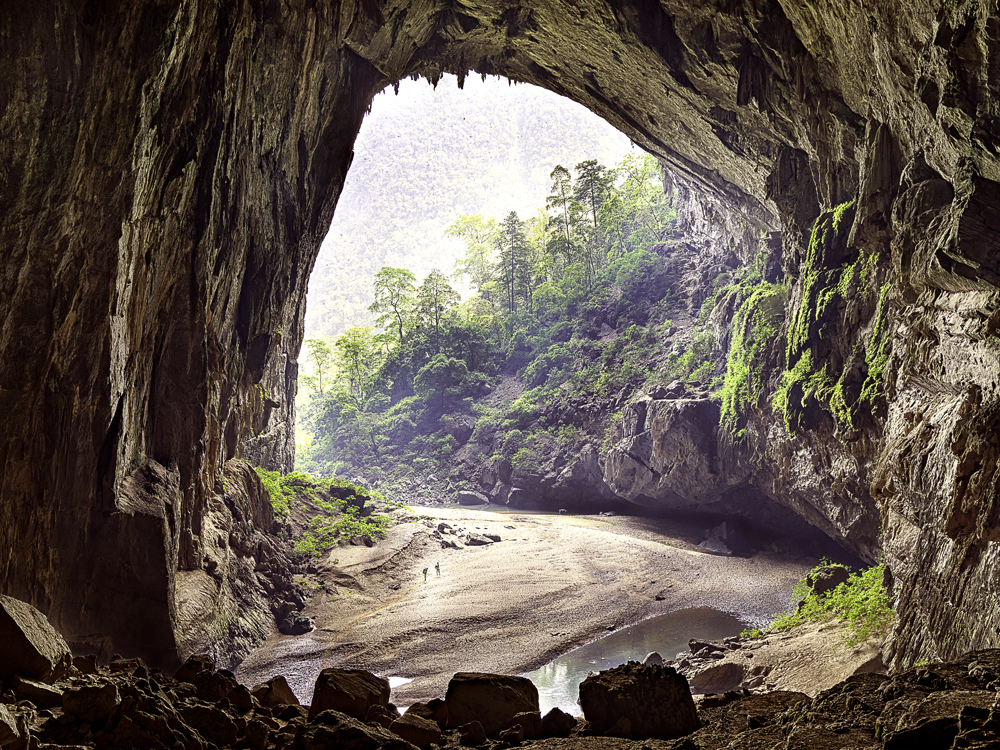
Central Vietnam’s Phong Nha-Ke Bang National Park was already known for hosting some of the world’s largest caves, but in 1990, a local man named Ho Khanh noticed an opening in a limestone cliff that spewed steam and the sounds of rushing water. Hee left the area without exploring, and couldn’t find it again under the thick foliage. Fortunately, in 2009, at the urging of the British Cave Research Association, Khanh rediscovered the cave. A year later, cave experts declared Son Doong (meaning “Mountain River Cave”) the world’s largest known cave, spanning an incredible 1.35 billion cubic feet.
Located under the Truong Son Mountains, Son Doong dates back 400 million years and was created by the Rao Thuong River. Collapsed portions of the roof called dolines act as skylights, fostering a dense jungle habitat within. Dripping water in the cave has created stalagmites the size of buildings. Even more remarkably, in 2019, explorers discovered it was connected to another massive cave, Hang Thung — making this stunning underground paradise even more massive than originally thought.
Blue Grotto – Italy
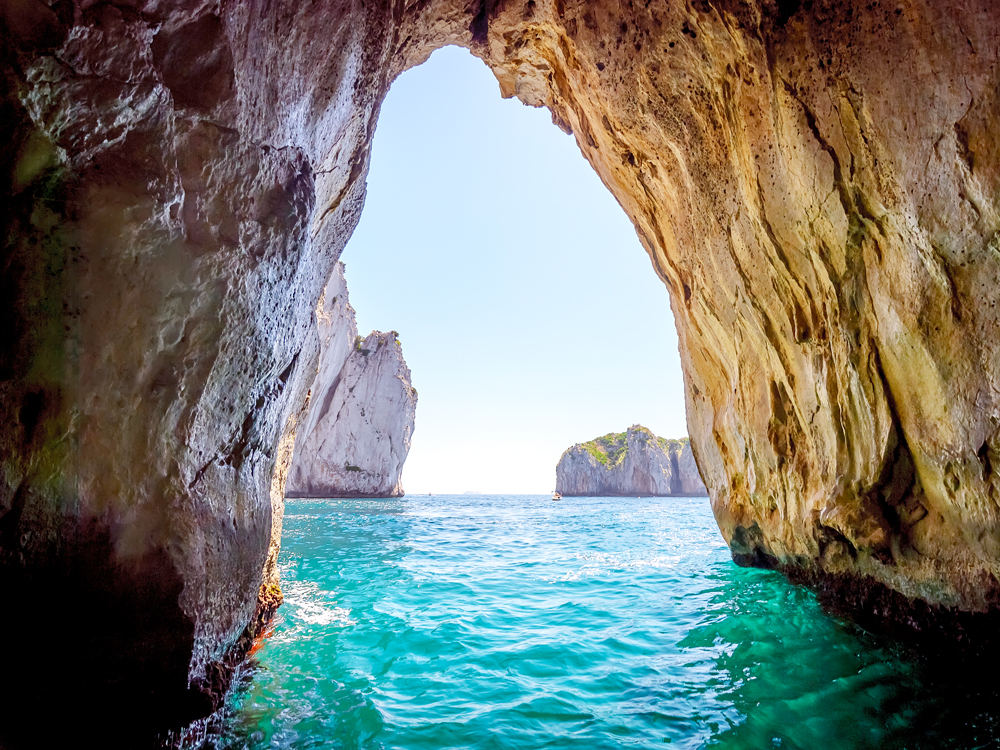
A stone’s throw from Italy’s Amalfi Coast, the island of Capri — with its rugged beauty and picturesque cliffside towns — has earned a spot on many travelers’ bucket lists. But before the secret got out, it was a favorite retreat of Roman emperors. One of them, Tiberius, was the first to seek out one site that draws so many visitors to the island — the Blue Grotto. He adopted this nearly 500-feet-deep sea cave with its exquisite neon blue water as his private pool. Its seemingly impossible hue results from sunlight entering through an underwater cavity and illuminating the shimmering ripples above.
Swimming in the cave is no longer permitted, but you don’t have to jump in to appreciate its beauty. You do have to lean back, however. To gain entry through the four-foot-high passageway at low tide, travelers must lay flat in a rowboat as a singing oarsman threads the boat into the grotto with a metal chain. Mark Twain was one of many to brave the claustrophobic journey: In his 1869 book The Innocents Abroad, he wrote, “No tint could be more ravishing, no lustre more superb” than the piercing blue that awaits inside the cave.
Sterkfontein Caves – South Africa
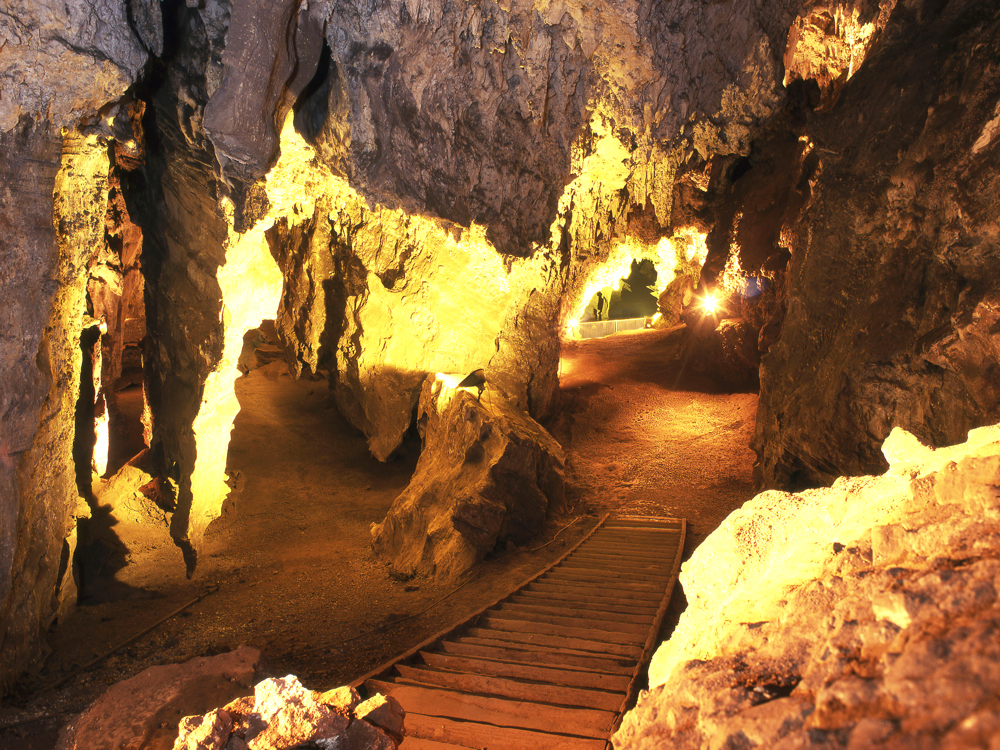
With a rich collection of humanoid fossils dating back millions of years, the Sterkfontein Caves are well-deserving of their nickname, the “Cradle of Humankind.” Though the caves, located an hour outside of Johannesburg, were once mined for lime deposits in the early 20th century, they have since produced over 500 fossils that have added key insight into humankind’s evolutionary process. Two of the most notable discoveries are “Mrs. Ples” — a 2 million-year-old skull largely still intact — and a nearly complete Australopithecus skeleton dubbed “Little Foot” that’s upwards of 3 million years old.
With cavernous limestone passageways draped by glorious stalactites and stalagmites, the Sterkfontein Caves possess a geological beauty as rich as their history. Visitors can embark on cave tours that include an accurate reconstruction of a mined cave, as well as a modern boardwalk installed in 2005 that leads to the excavation site where many of the cave’s legendary fossils were first unearthed. The cave is even home to a mysterious underground lake (though it’s too dangerous for exploration). If you do visit, be sure to stop by the Maropeng Visitor Center, which offers fascinating educational exhibits about humankind’s history as far back as the universe’s creation.
Luray Caverns – Virginia
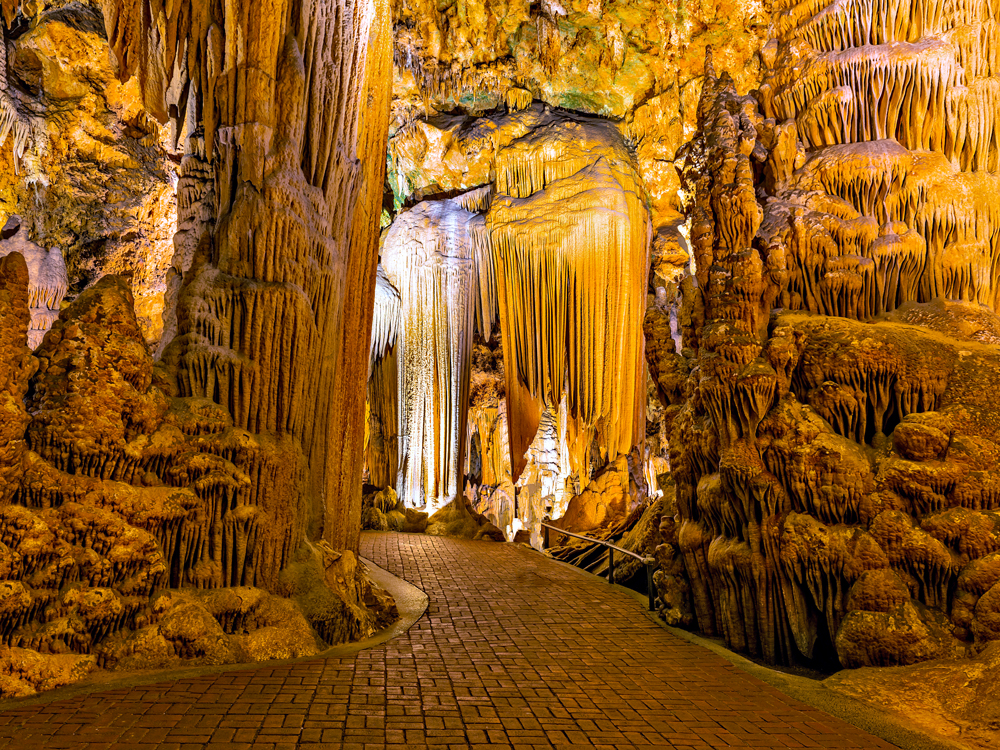
There are over 4,000 caves in Virginia, but most are on private property and difficult to explore (unless you’re a trained spelunker). Fortunately, the spectacular Luray Caverns do not fall into that category. Spanning 60 acres and reaching 10 stories tall, the largest cave complex in the eastern United States is open to the public, with ample lighting and paved pathways for accessibility.
This massive system of limestone and clay caverns was carved by an ancient sea and features stalactites, stalagmites, and other beguiling formations. The cave was long known to Native Americans in the area, but in 1878 a group of local settlers found it, hoping to turn it into a tourist attraction. Each year, millions of visitors come to explore its natural wonders: Pluto’s Ghost, a 500-foot column, is a must-see, as are Saracen’s Tent, a scrim of thin stone along the cave ceiling’s incline, and Dream Lake, a still pool reflecting the stalactites above.
And then there’s the Cathedral — a soaring space featuring an electric organ installed in the 1950s. Rather than traditional pipes, the Great Stalacpipe Organ is wired to mallets that strike stalactites throughout the complex, making Luray Caverns one huge musical instrument — unlike any other you’ve heard before.
More from our network
Daily Passport is part of Inbox Studio, which publishes content that uplifts, informs, and inspires.






